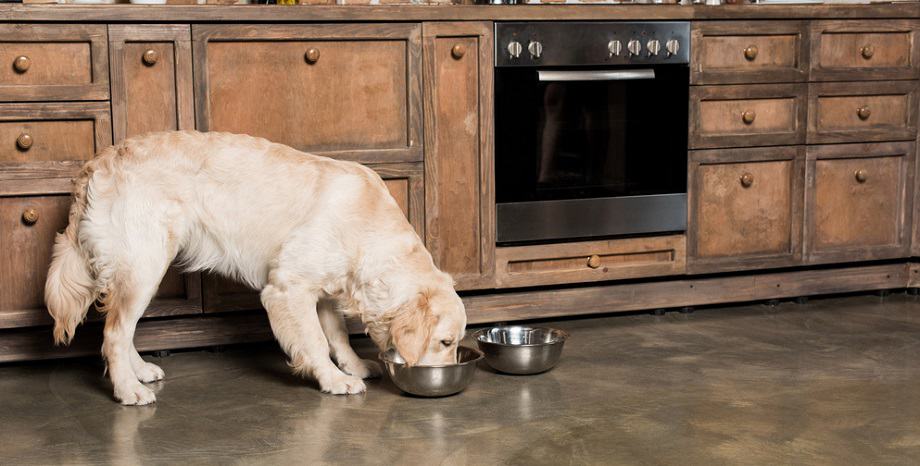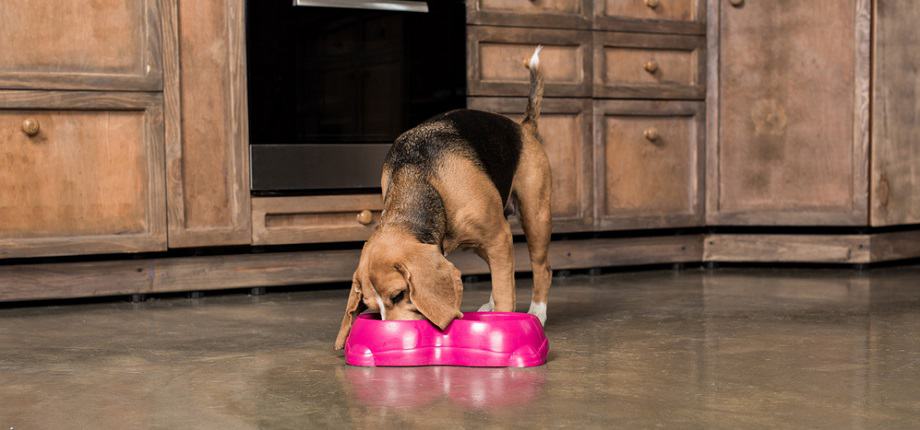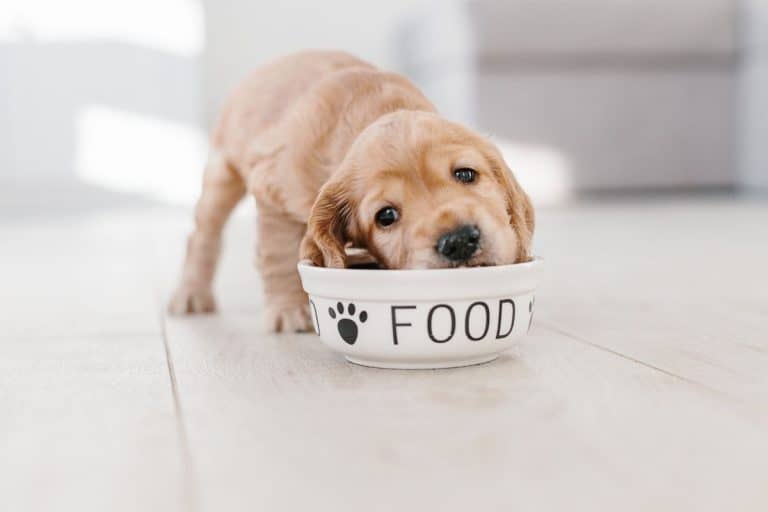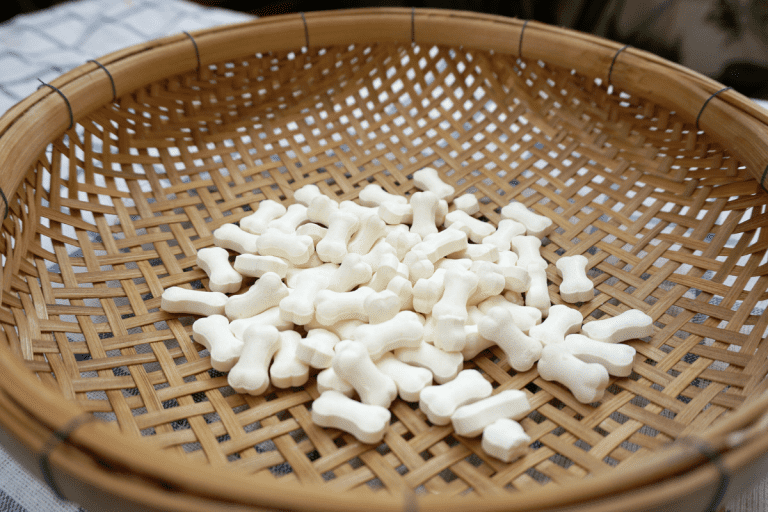How To Put Weight On A Dog With Sensitive Stomach (How To Fatten Up A Dog)
There is nothing as disheartening as a dog who will not eat his food. It is so hard to see them thin out as they struggle to digest most foods.
What you need to know is how to put weight on a dog with a sensitive stomach.
We are going to go over what causes sensitive stomachs, signs that you should look out for, and what you can do once you have figured it out.
Then, you will be able to help your furry friend put on much needed weight. This is what you want to know.
What Causes Sensitive Stomachs?

Before we go into how to deal with sensitive stomachs, let’s go over what causes them in the first place. Some breeds will have a higher tendency toward digestive issues, but all breeds can have sensitivities.
As is the same with people, some dogs are just more sensitive to certain foods than others. This can be grains or even certain meats. There is not just one food that dogs can be sensitive to.
Some sensitivities are more like allergies, or even just an inability to absorb certain foods. It could be the protein that is within certain foods or even a natural deficiency that your dog might be struggling with.
It also can be that you are feeding your dog scraps and other human foods, causing a dietary disturbance.
There are quite a few things that can cause a sensitive stomach:
- Inflammatory bowel disease
- Bacterial infection
- Fungal infection
- Ulcers
- Parasites
- Pancreatitis
All of these can be treated, but you need to seek the help of a vet to know what is actually going on.
Before Starting A New Diet
Before you launch into the process of trying to get your dog to put on some extra weight, you need to do something first: you have to take your dog into the vet.
This is because your dog’s weight loss might have nothing to do with digestive issues. Stomach cancer and lymphoma will also exhibit similar symptoms to stomach sensitivities, so you need to eliminate those as a possibility before you jump into working on a new diet with your dog.
It is also a good idea to confer with your vet to make sure that she agrees with the methods of helping your dog gain weight.
The goal here is to make sure your dog is as healthy as possible, so before looking into how to put weight on a dog with a sensitive stomach, make sure your vet agrees.
Signs Of A Sensitive Stomach

Since dogs cannot verbally tell you what kinds of sensitivities that they are suffering from, you will need to look for other indications that your dog is suffering. Some signs to watch for include:
- Diarrhea
- Vomiting
- Flatulence
- Lack of appetite
- Bloody stool
- Reduction in energy
If your dog is suffering from any or all of these symptoms, especially if it goes on for several days, it is time to take your dog in and make sure that the does not have any underlying conditions to cause these side effects.
If it is just poor digestion on your dog’s part, then the symptoms can be helped with dietary changes.
It is especially important to monitor these symptoms if your dog has more than one of them.
Occasional vomiting is not abnormal for dogs, but if your dog is vomiting and has blood in the stool, for example, take your dog in first so you can eliminate any horrible results.
How To Fatten Up A Dog With Sensitive Stomach

Once you have confirmed that your dog has a sensitive stomach and that he needs help putting on weight, it is time to see what you can do about it. Here are some suggestions.
Start With A Bland Diet
If your pup’s stomach is recovering from some kind of ailment or condition, chances are that the stomach itself its going to be damaged and need some healing time.
A bland diet is not a permanent solution for sensitive stomachs, but it can help relieve any immediate discomfort that your dog might be experiencing. Bland diets usually consist of white rice and plain chicken, though some dogs do have issues with chicken.
Bananas in moderation are also easy on the stomach, as is pumpkin. Pumpkin is a great option to help your dog deal with diarrhea.
Get Some Probiotics
Probiotics are excellent for humans and dogs alike when it comes to stomach problems. Your vet will certainly have some recommendations on the best probiotics for you, but you can also get some over the counter.
Probiotics come in a liquid, in a powder that can be sprinkled over food, or in a pill form. Probiotics work by restoring the healthy bacteria that might have been lost throughout the digestive tract, which will improve digestion and will eventually help your dog build up his appetite.
Switch Dog Foods
If you didn’t know, there are dog foods out there that have been specifically made to help dogs that have sensitive stomachs.
If your dog is going to have a chronically sensitive stomach, it is a good idea to switch to a dog food that is going to accommodate that need. If your dog is able to tolerate the food that he is eating better, he will have better luck putting weight back on.
Foods for sensitive stomachs usually have a lot of fiber to prevent constipation. The foods are low in fat, which will not help much with weight gain, but low-fat foods are easier to digest, so you can accommodate the difference by adding in the calories elsewhere.
These foods are also usually rich in probiotics, so you will not need to add them in extra to the diet if the food already contains them.
Also, the food’s label should say that it has been approved by the Association of American Feed Controls (AAFCO), which has a high standard for nutrition.
That way you can be sure that the food was developed under expert supervision and with good quality control. Don’t just by any food that says it is good for digestion, however.
It would be a good idea to make sure that the food is appropriate to your dog’s needs, especially when it comes to which stage of life the dog is in.
Remember to be careful when switching dog foods. It needs to be done slowly, over time, especially if your dog has a sensitive stomach. Any food change can cause digestive problems rather than helping them.
Give Your Dog An Extra Helping
Once you know that your dog’s diet is ok and you are not giving him any food that might upset his stomach, you might want to start by giving him an extra meal.
If you are giving your dog two meals a day, it might be good to add a third to help him put some weight back on.
You can also just increase the amount of food per meal that you give your dog. If your dog’s stomach has been sore for a while, he might not be so inclined to eat more food than he is used to, so this might take a little bit of time to adapt.
Add Things To The Kibble
Dogs can eat certain human foods without trouble. If you want to add in a little bit of fat and calories to your dog’s food, you can put in a tablespoon of peanut butter to his food, adding some extra calories and perhaps making the taste of the food more enticing.
Eggs are another great choice to add in, just don’t add anything to the eggs. Also, you can help prevent further upset stomachs by cooking the eggs before adding them to the dog’s food.
Eggs have even been shown to help calm a sensitive stomach, so it might work out well for you.
Slip In Some Wet Dog Food
Let’s be honest. Most dogs prefer the taste of wet dog food to the taste of kibble. Wet dog food is usually higher in calories and fat, but it also is more expensive.
Regardless, adding some into your dog’s kibble will help your dog put on the extra weight that he needs. It might not be a good idea to do it every meal, but it will give you the extra calories you need to help put weight on the dog.
Put An Adult Dog Back Onto Puppy Food
Puppy food is made to be higher in calories to help puppy’ maintain a weight as they are growing. If there is a good sensitive food out there for your dog, look into getting the puppy version.
That way, the food will be more tolerable on the dog’s stomach and he will get some extra calories to help put the weight back on.
Give Your Pup Some Treats
All good dogs deserve treats and they can be a good way to add in some calories to your dog’s food.
Double-check the ingredients in the treats before giving them to your dog, just to make sure that they do not have anything in them that will cause further digestive upset rather than helping your dog gain weight.
With the right treats, however, your dog should be able to get a little bit more weight on him.
Take Your Dog Out For Exercise
We know that this might sound counterproductive, but it is true: dogs that exercise are more likely to be at a healthy weight, whether that means losing extra fat or putting on muscle to increase your weight.
If you think about it, most of a dog’s weight comes from muscle rather than fat. That means that if your dog is working out is body, he will have a better chance of gaining muscle weight.
A sensitive stomach is nothing to play around with. If your dog is losing weight rapidly and refusing to eat things to get the weight back on, you need to contact your vet for guidance.
You do not want to accidentally assume that your dog has one condition that is not true. Ask your vet how to help put on weight on your sensitive dog.






